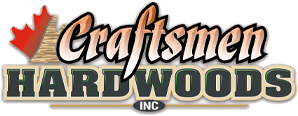Sheet Goods Part 3 - MDF
The final installment of our sheet goods posts is focused on MDF, medium-density fiberboard.
In 1925, an inventor named William Mason was searching for a way to use leftover wood chips and sawdust. As with most great inventions, a mistake was made! He forgot to turn off his machinery, and in the morning found the wood chips and sawdust had formed into a thin sheet. By adding resin, heat, and pressure, MDF was conceived!
It wasn’t until the mid 1980’s that MDF gained popularity. Today, MDF is found in almost all products that you would find solid wood. Cabinetry, trim, doors, and furniture are just a few products where manufacturers have incorporated MDF.
Since MDF is a by-product, its price, availability, and versatility make it attractive to use. There are varying grades, or densities, that allow the manufacturer a wide range of options depending on their application.
We stock products like Roseburg or Ranger, which offer MDF sheets on the lower range of density. Higher densities are produced by Trupan (which we stock), Ranger Platinum and Plum Creek.
If you need an MDF that will be easy to finish, a denser product would be best suited. If weight and price are more of a factor, the less dense options tend to be lighter and more economically priced.
There are a few downsides to MDF. One would be the possible exposure to moisture. If not sealed well enough, MDF will expand and bubble. MDF is offered in a moisture resistant option such as Extira for exterior applications, or where moisture cannot be avoided. When painted and sealed well, moisture should not be a concern. Another downside is MDF has the tendency for its fibers to fuzz up in the sanding and finishing process. This is where the denser sheets have the upper hand, but a slight possibility is still present.
Here are some benefits to MDF. First, using MDF in place of solid wood should result in more stability.
For instance, when making 5-piece cabinet doors with solid wood, the center panel needs to be built with a loose fit to allow expansion and contraction from relative humidity. This loose panel will then shake and rattle. (Rubber spaceballs are a good solution to help with that!). If using MDF for the center panel, you will have minimal movement.
Another benefit of MDF is due to the manufacturing process, it will not have core voids or the potential wavey core as sometimes seen with veneer core sheets. Also, because MDF is made from finely ground wood fibers, it is great for machining and routering as it leaves a nice smooth finish and is ready for paint or stain.
I hope these sheet goods blogs have helped in your search for the right product for your application.
As always, if you have any questions, or want to know what we have, feel free to scan the website and submit your quote, or give us a call. We look forward to serving you!


